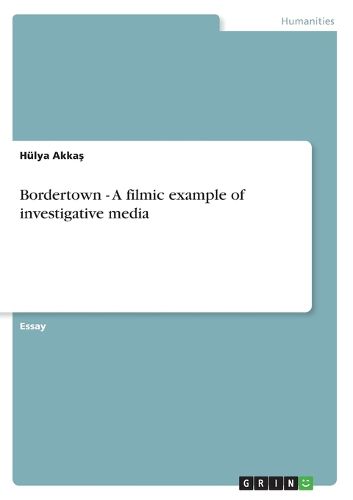Readings Newsletter
Become a Readings Member to make your shopping experience even easier.
Sign in or sign up for free!
You’re not far away from qualifying for FREE standard shipping within Australia
You’ve qualified for FREE standard shipping within Australia
The cart is loading…






Essay from the year 2008 in the subject Sociology - Political Sociology, Majorities, Minorities, grade: 2,0, University of Siegen, course: Migration Matters 2, language: English, abstract: Since the 1990s, in Juarez, Mexico, there have taken place scores of murders of young Mexican women. They are chased by their murderers on their ways home from the so called ‘maquiladoras’, which are factories where they work for a little sum of money and produce TVs or computers for the USA at the assembly lines. The young women are violated and raped by their kidnappers and later their dead bodies are buried somewhere in the desert of Mexico. Nevertheless, the police and the whole government of Juarez try to camouflage these events. The number of victims, published by the police, is about 375 women, whereas the estimated number of unreported cases is about 5000. Gregory Nava made these true events to the story of his movie Bordertown from 2006. The tortures the women of Juarez have to experience and the underlying topic of border-crossing are the essential subjects of Bordertwon. Furthermore, within his movie, he has chosen a special way of communicating these topics to the viewer: he makes use of media, respectively investigative media, in order to show how hard it is to explore this subject. So, not only he himself uses media as an organ of communication but he moreover embeds the investigation of certain matters into his movie. Nowadays media is the most important institution of distributing and communicating information and of transmitting one’s own perspective about certain topics. This is not only done by directors like in the case of Gregory Nava but by everyone who stands in the centre of a certain field - for instance politicians or celebrities. As Wilma de Jong, Martin Shaw and Neil Stammers have formulated in their introduction of Global Activism, Global Media (2005): Media appear to be increasingly globalised, as national television, press, etc. are subsumed in giga
$9.00 standard shipping within Australia
FREE standard shipping within Australia for orders over $100.00
Express & International shipping calculated at checkout
Stock availability can be subject to change without notice. We recommend calling the shop or contacting our online team to check availability of low stock items. Please see our Shopping Online page for more details.
Essay from the year 2008 in the subject Sociology - Political Sociology, Majorities, Minorities, grade: 2,0, University of Siegen, course: Migration Matters 2, language: English, abstract: Since the 1990s, in Juarez, Mexico, there have taken place scores of murders of young Mexican women. They are chased by their murderers on their ways home from the so called ‘maquiladoras’, which are factories where they work for a little sum of money and produce TVs or computers for the USA at the assembly lines. The young women are violated and raped by their kidnappers and later their dead bodies are buried somewhere in the desert of Mexico. Nevertheless, the police and the whole government of Juarez try to camouflage these events. The number of victims, published by the police, is about 375 women, whereas the estimated number of unreported cases is about 5000. Gregory Nava made these true events to the story of his movie Bordertown from 2006. The tortures the women of Juarez have to experience and the underlying topic of border-crossing are the essential subjects of Bordertwon. Furthermore, within his movie, he has chosen a special way of communicating these topics to the viewer: he makes use of media, respectively investigative media, in order to show how hard it is to explore this subject. So, not only he himself uses media as an organ of communication but he moreover embeds the investigation of certain matters into his movie. Nowadays media is the most important institution of distributing and communicating information and of transmitting one’s own perspective about certain topics. This is not only done by directors like in the case of Gregory Nava but by everyone who stands in the centre of a certain field - for instance politicians or celebrities. As Wilma de Jong, Martin Shaw and Neil Stammers have formulated in their introduction of Global Activism, Global Media (2005): Media appear to be increasingly globalised, as national television, press, etc. are subsumed in giga